5TH INTERNATIONAL CONFERENCE NANOBIOPHYSICS: FUNDAMENTAL AND APPLIED ASPECTS, 2-5 OCTOBER 2017, KHARKIV, UKRAINE
Synthesis and Biomedical Applications of 2D Carbides MXenes
Gogotsi O. G.1 *, Zahorodna V. V.1, Balitskiy V. Y., Zozulya Y. I. 1, Gogotsi H. G.2, Brodnikovskiy M. P.2, Gubynskyi M. V.1, Fedorov S. S.1, Alhabeb M.3, Meng F3., Anasori B.3, Gogotsi Y. G.3
1 Materials Research Centre, 3, Krzhyzhanovs'koho Str, Kyiv 03680, Ukraine, e-mail: Этот e-mail адрес защищен от спам-ботов, для его просмотра у Вас должен быть включен Javascript
2 Frantsevich Institute for Problems of Materials Science of NASU, 3, Krzhyzhanovs'koho Str, Kyiv 03680, Ukraine
3Department of Materials Science and Engineering, and A. J. Drexel Nanomaterials Institute, Drexel University, Philadelphia, PA 19104, USA
Abstract
Two-dimensional (2D) materials with a thickness of a few nanometers or less can be used as single sheets due to their unique properties or as building blocks, to assemble a variety of structures. The family of two-dimensional (2D) transition metal carbides and nitrides, MXenes, has been expanding rapidly since the discovery of Ti3C2 in 2011 [1]. More than 20 different MXenes have been synthesized, and the structure and properties of numerous other MXenes have been predicted using density functional theory calculations [2]. MXenes’ versatile chemistry renders their properties tunable for a large variety of applications. Oxygen or OH terminated MXenes, such as Ti3C2O2, are promising candidates for biomedical applications [2].
Antibacterial properties of micrometer-thick titanium carbide (Ti3C2Tx) MXene membranes prepared by filtration on a polyvinylidene fluoride (PVDF) support have been studied. The bactericidal properties of Ti3C2Tx modified membranes were tested against Escherichia coli and Bacillus subtilis. The demonstrated antibacterial activity of MXene coated membranes against common waterborne bacteria, promotes their potential application as anti-biofouling membrane in water and wastewater treatment processes, as well as a bactericidal coating. [3] The 2D titanium carbide sheets manifest strong optical absorption in the near-infrared (NIR) around 800 nm. The performance of this material is comparable or even superior to that of state-of-the-art photoabsorption materials, including gold-based nanostructures, carbon nanomaterials, and transition-metal dichalcogenides. Preliminary studies show that the titanium carbide sheets serve as an efficient photothermal agent against tumor cells. [4]
References:
1. Two-Dimensional Nanocrystals Produced by Exfoliation of Ti3AlC2. M. Naguib, et al., Advanced Materials, 23, 4248 (2011)
2. 2D metal carbides and nitrides (MXenes) for energy storage. B. Anasori, M. R. Lukatskaya, Y. Gogotsi, Nature Reviews Materials, 2, 16098 (2017)
3. Efficient Antibacterial Membrane based on Two-Dimensional Ti3C2Tx (MXene) Nanosheets, K. Rasool, et al., Scientific Reports, 7, 1598 (2017)
4. Organic-Base-Driven Intercalation and Delamination for the Production of Functionalized Titanium Carbide Nanosheets with Superior Photothermal Therapeutic Performance. J. Xuan, et al., Angew. Chem. Int. Ed. 55, 1 – 7 (2016)
5. High Electrosorption Capacity Electrodes for Capacitive Deionization. K. B. Hatzell, E. Iwama, B. Daffos, P. L. Taberna, T. Tzedakis, A. G. Gogotsi, P. Simon, Y. G. Gogotsi, The 224th Electrochemical Society Meeting (2013)
6. Photocatalytic WO3 and TiO2 Films on Brass. O. Mashtalir, M. Kurtoglu, S. Pogulay, A. Gogotsi, M. Naguib, Y. Gogotsi, Journal: International Journal of Applied Ceramic Technology, 10 (1), 26 (2013)
7. Nanostructured tunable mesoporous carbon for energy and biomedical applications. O. Gogotsi, B. Dyatkin, Y. Gogotsi, P. Simon, Y. Zozulya, B. Malinovskiy, V. Zahorodna, 4th International Conference Nanobiophysics: Fundamental and Applied Aspects, Kyiv, Ukraine (2015)
Download PDF version of Synthesis and Biomedical Applications Of 2D Carbides (Mxenes)




 MXenes potential applications include sensors, wound healing materials, and drug delivery systems. A recent study explored how different synthesis methods affect the safety and performance of MXenes. By comparing etching conditions and intercalation strategies, researchers discovered that fine-tuning the surface chemistry of MXenes plays a crucial role in improving biocompatibility. These results provide practical guidelines for developing safer MXenes and bring the field one step closer to real biomedical applications.
MXenes potential applications include sensors, wound healing materials, and drug delivery systems. A recent study explored how different synthesis methods affect the safety and performance of MXenes. By comparing etching conditions and intercalation strategies, researchers discovered that fine-tuning the surface chemistry of MXenes plays a crucial role in improving biocompatibility. These results provide practical guidelines for developing safer MXenes and bring the field one step closer to real biomedical applications.
 Exellent news, our joint patent application with Drexel University on highly porous MAX phase precursor for MXene synthesis published. Congratulations and thanks to all team involved!
Exellent news, our joint patent application with Drexel University on highly porous MAX phase precursor for MXene synthesis published. Congratulations and thanks to all team involved! Our team was very delighted to take part in International Symposium "The MXene Frontier: Transformative Nanomaterials Shaping the Future" – the largest MXene event in Europe this year!
Our team was very delighted to take part in International Symposium "The MXene Frontier: Transformative Nanomaterials Shaping the Future" – the largest MXene event in Europe this year!  Last Call! Have you submitted your abstract for IEEE NAP-2025 yet? Join us at the International Symposium on "The MXene Frontier: Transformative Nanomaterials Shaping the Future" – the largest MXene-focused conference in Europe this year! Final Submission Deadline: May 15, 2025. Don’t miss this exclusive opportunity to showcase your research and engage with world leaders in the MXene field!
Last Call! Have you submitted your abstract for IEEE NAP-2025 yet? Join us at the International Symposium on "The MXene Frontier: Transformative Nanomaterials Shaping the Future" – the largest MXene-focused conference in Europe this year! Final Submission Deadline: May 15, 2025. Don’t miss this exclusive opportunity to showcase your research and engage with world leaders in the MXene field! We are excited to announce the publication of latest review article on MXenes in Healthcare. This comprehensive review explores the groundbreaking role of MXenes—an emerging class of 2D materials—in revolutionizing the fields of medical diagnostics and therapeutics. Read the full article here: https://doi.org/10.1039/D4NR04853A.
We are excited to announce the publication of latest review article on MXenes in Healthcare. This comprehensive review explores the groundbreaking role of MXenes—an emerging class of 2D materials—in revolutionizing the fields of medical diagnostics and therapeutics. Read the full article here: https://doi.org/10.1039/D4NR04853A. Congratulations and thank you to our collaborators from TU Wien and CEST for very interesting work and making it published! In this work, an upscalable electrochemical MXene synthesis is presented. Yields of up to 60% electrochemical MXene (EC-MXene) with no byproducts from a single exfoliation cycle are achieved.
Congratulations and thank you to our collaborators from TU Wien and CEST for very interesting work and making it published! In this work, an upscalable electrochemical MXene synthesis is presented. Yields of up to 60% electrochemical MXene (EC-MXene) with no byproducts from a single exfoliation cycle are achieved. Congratulations to all collaborators with this interesting joint work!
Congratulations to all collaborators with this interesting joint work!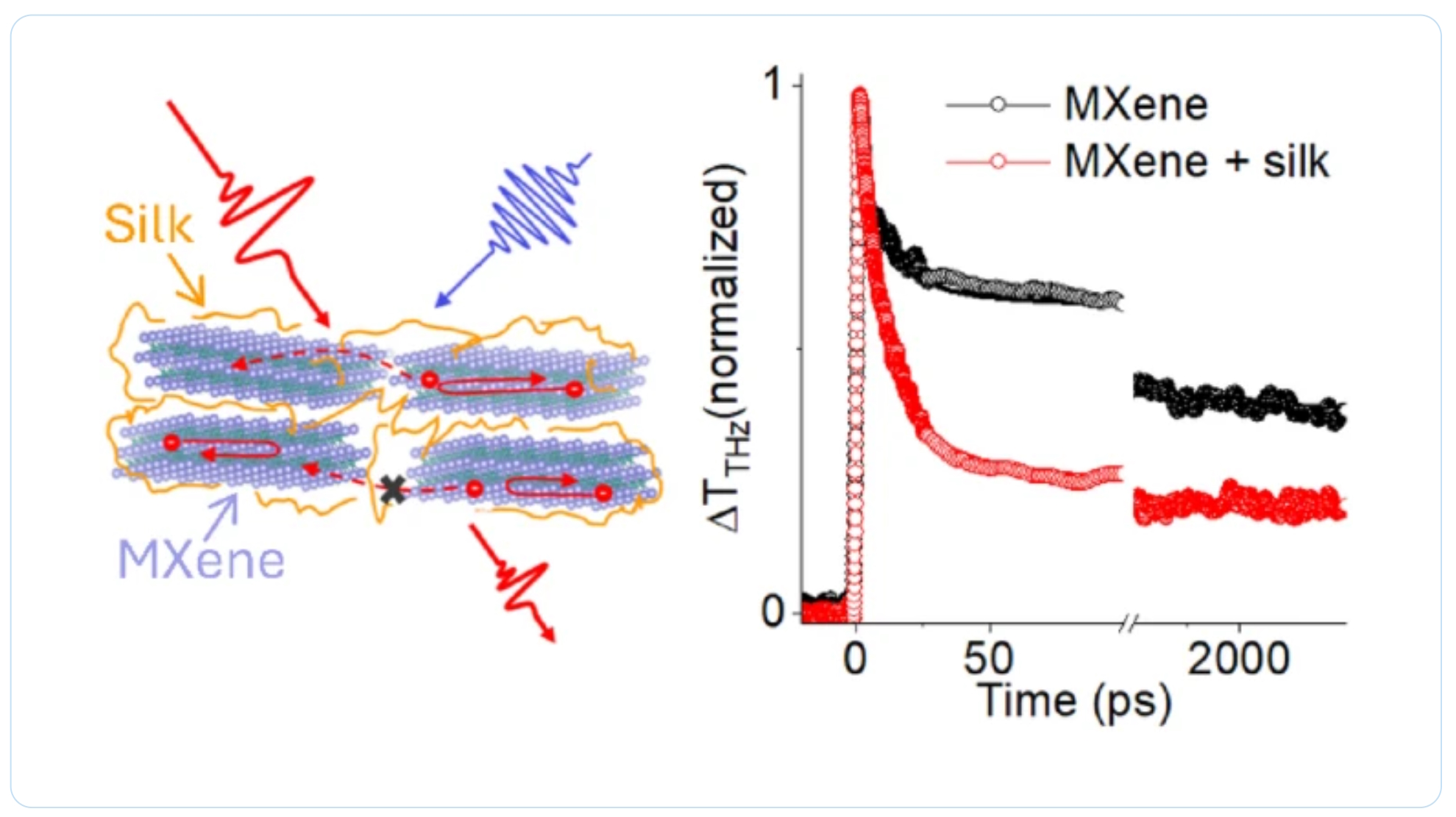 Thank you to our collaborators for the amazing joint work recently published in Graphene and 2D Nanomaterials about MXene–silk fibroin composite films aiming to develop materials with tunable electronic and thermal properties
Thank you to our collaborators for the amazing joint work recently published in Graphene and 2D Nanomaterials about MXene–silk fibroin composite films aiming to develop materials with tunable electronic and thermal properties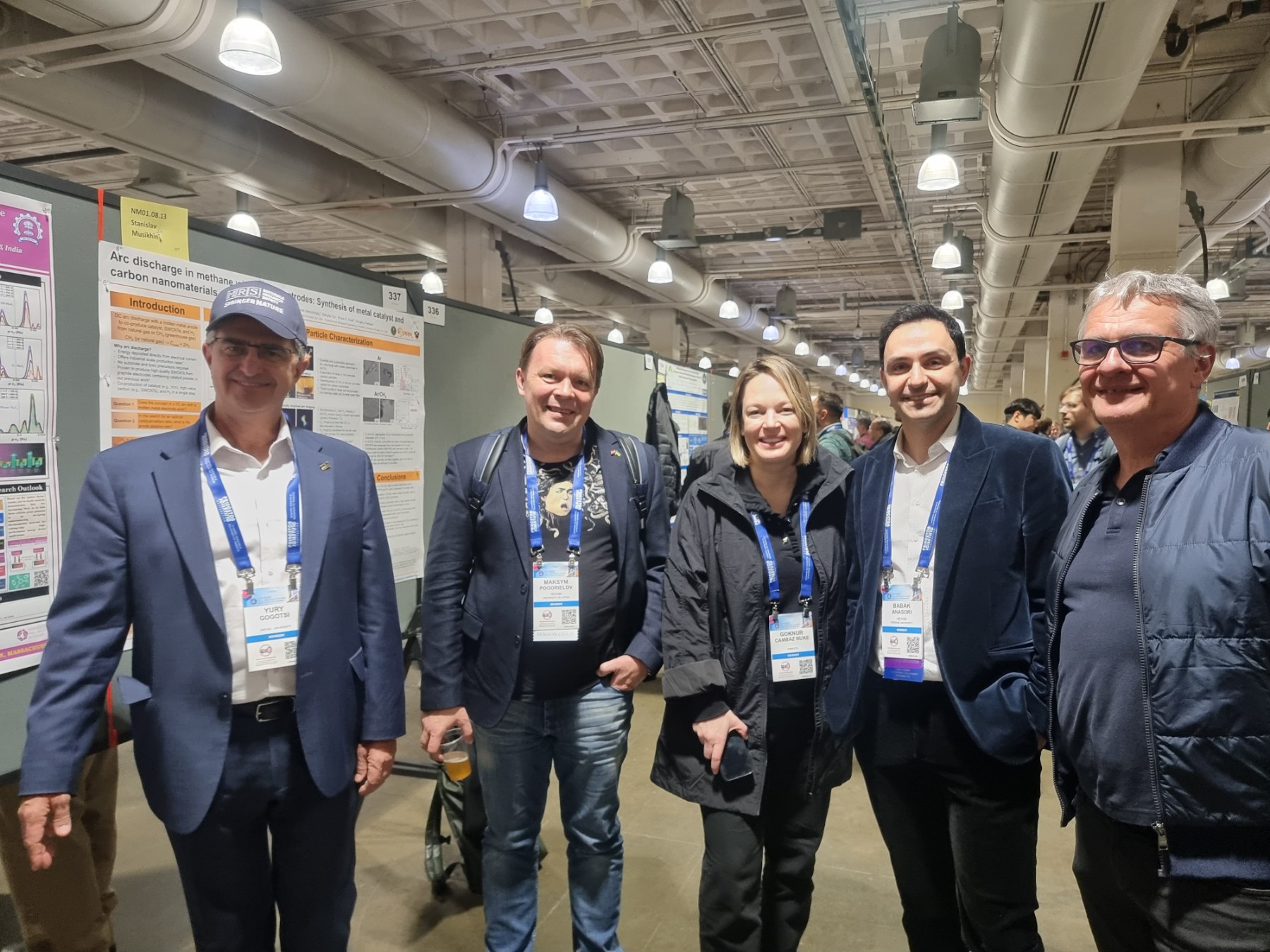 Dr. Oleksiy Gogotsi, director of MRC and Carbon-Ukraine, innovative companies that are among the leaders on the world MXene market, visited 2024 MRS Fall Meeting & Exhibit. together with Dr. Maksym Pogorielov, Head of Advanced Biomaterials and Biophysics Laboratory, University of Latvia.
Dr. Oleksiy Gogotsi, director of MRC and Carbon-Ukraine, innovative companies that are among the leaders on the world MXene market, visited 2024 MRS Fall Meeting & Exhibit. together with Dr. Maksym Pogorielov, Head of Advanced Biomaterials and Biophysics Laboratory, University of Latvia.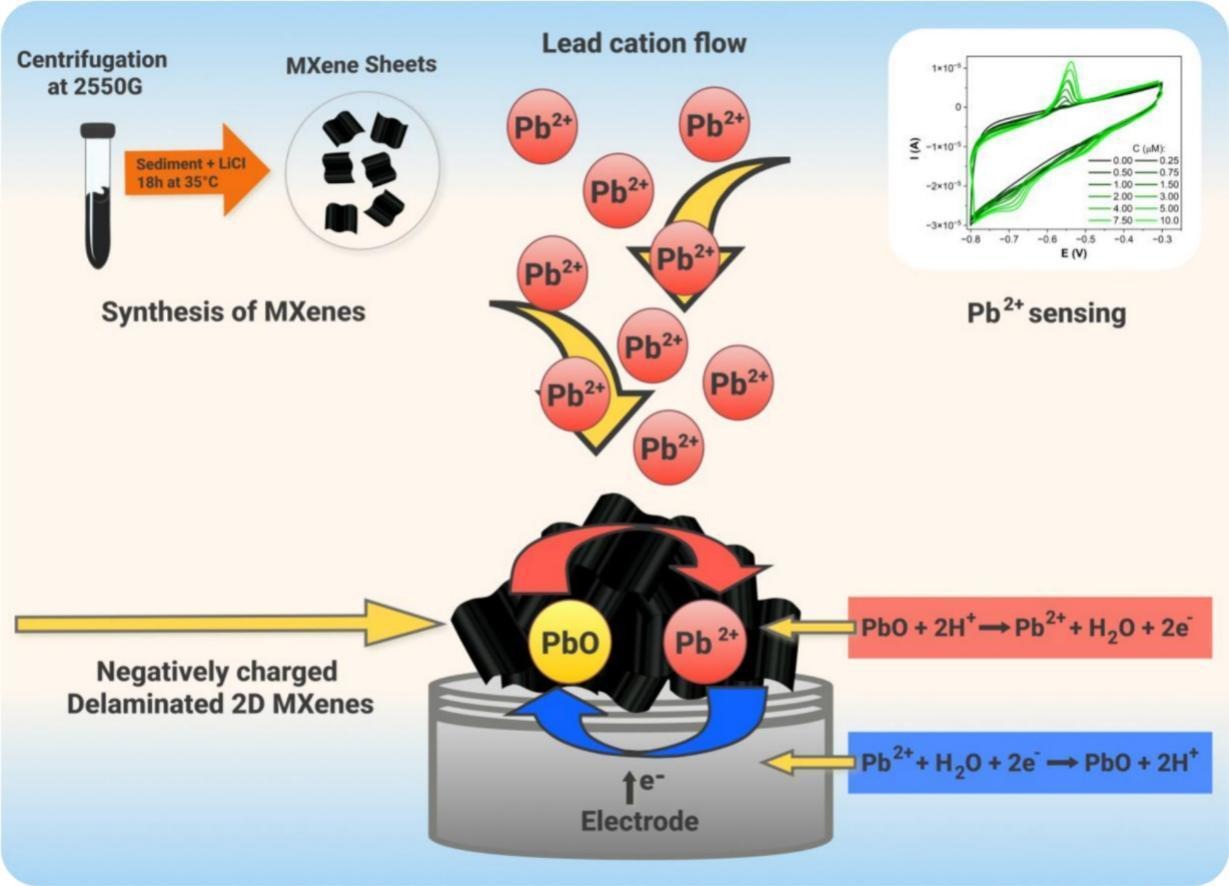
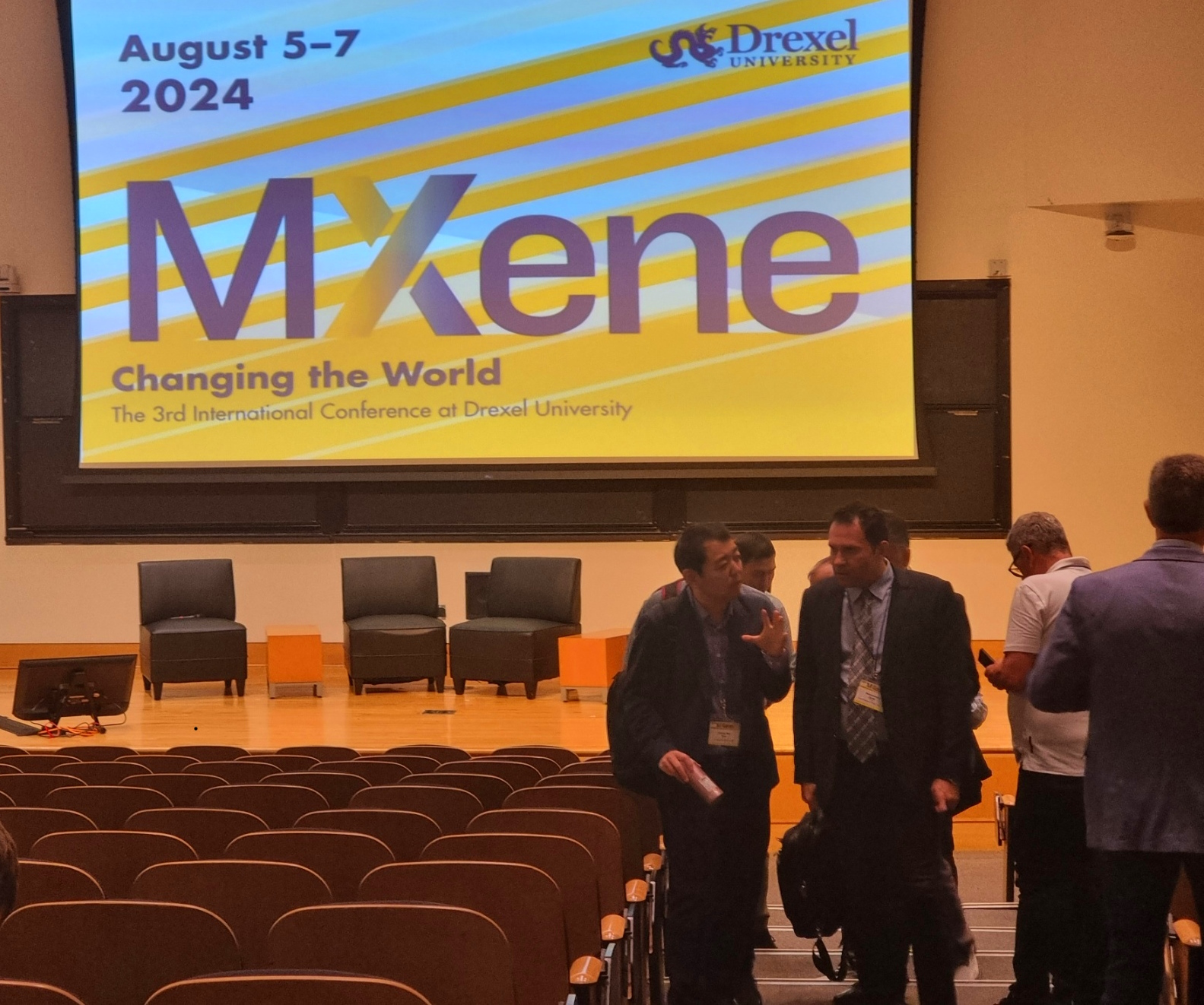 MRC and Carbon-Ukraine team visited the 3rd International MXene conference held at Drexel University on August 5-8, 2024. Conference brought together the best reserchers and leading experts on MXene field.
MRC and Carbon-Ukraine team visited the 3rd International MXene conference held at Drexel University on August 5-8, 2024. Conference brought together the best reserchers and leading experts on MXene field. 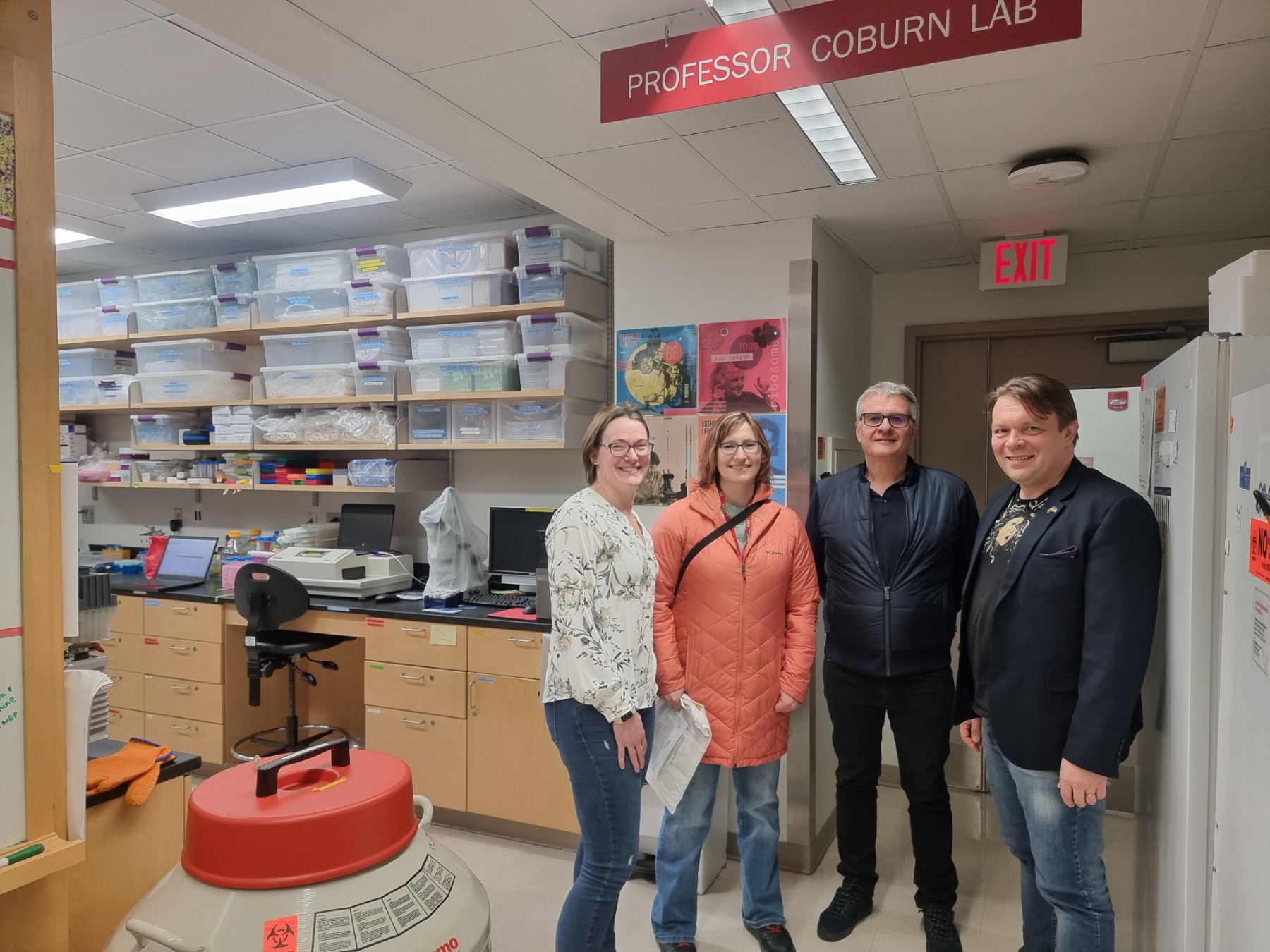
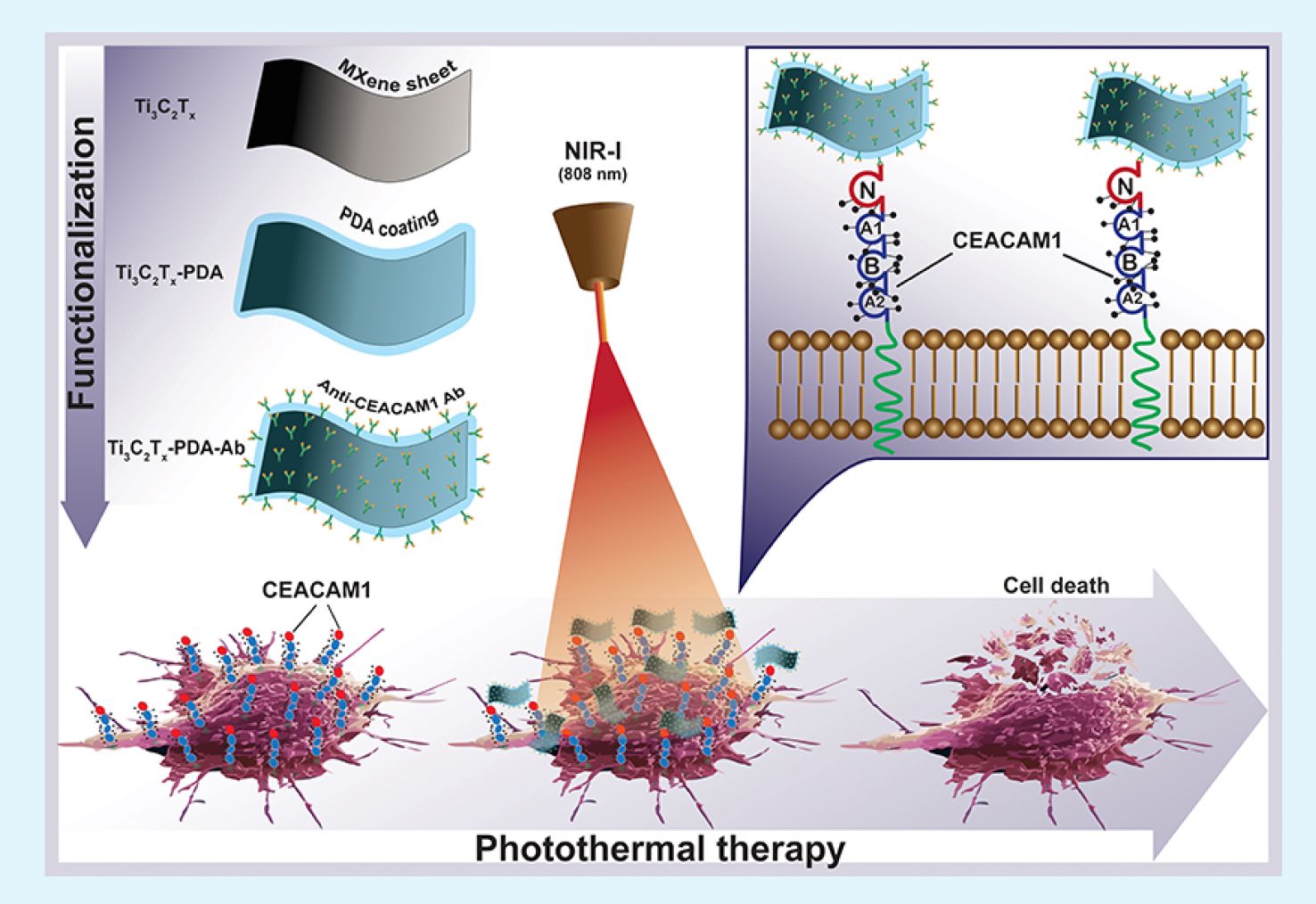 Together with colleagues from the University of Latvia, MRC/Carbone Ukraine, Adam Mickiewicz University, University Clinic Essen, and others, we have developed a novel concept involving the binding of antibodies to MXenes. In our research, we utilized anti-CEACAM1 antibodies to develop targeted photo-thermal therapy for melanoma (in vitro), paving the way for future in vivo studies and clinical trials. For the first time, we demonstrate the feasibility of delivering MXenes specifically targeted to melanoma cells, enabling the effective ablation of cancer cells under near-infrared (NIR) light. This new technique opens up vast potential for the application of MXenes in cancer treatment, diagnostics, drug delivery, and many other medical purposes.
Together with colleagues from the University of Latvia, MRC/Carbone Ukraine, Adam Mickiewicz University, University Clinic Essen, and others, we have developed a novel concept involving the binding of antibodies to MXenes. In our research, we utilized anti-CEACAM1 antibodies to develop targeted photo-thermal therapy for melanoma (in vitro), paving the way for future in vivo studies and clinical trials. For the first time, we demonstrate the feasibility of delivering MXenes specifically targeted to melanoma cells, enabling the effective ablation of cancer cells under near-infrared (NIR) light. This new technique opens up vast potential for the application of MXenes in cancer treatment, diagnostics, drug delivery, and many other medical purposes.